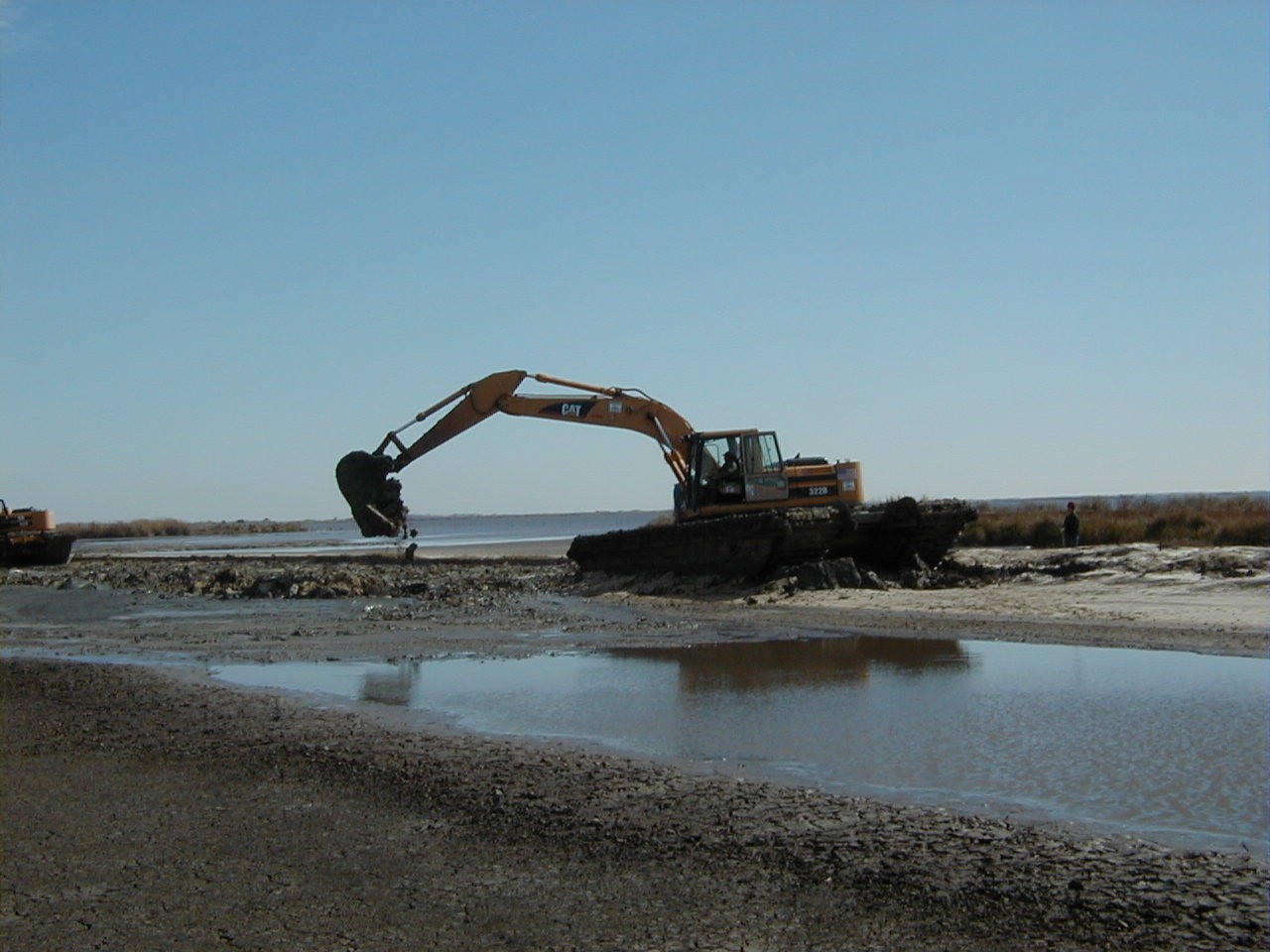Filling old canals
Amphibious marsh vehicle with excavator knocking down spoil bank
Mark Ford/National Park Service (US)
Canal filling project in progress. Area in the foreground has been completed with levee spoil banks knocked down and filled into canal. The area in the background with trees will be completed soon.
Mark A. Ford, National Park Service/US
Spoil banks from canal dredging are being pushed back into the canals, as funds for projects come available, in "backfilling" events. This helps restore the normal hydrology and keep the marsh healthy and less stressed. Canal backfilling eliminates the hydrology barrier present from the dredged material spoil banks, as well as partially filling in canals long unused for oil exploration or production extraction. Using heavy equipment, such as excavators on amphibious marsh buggies, old spoil banks are pushed into the canals. Trees are knocked down and the final elevation is similar to the surrounding marsh. This allows natural flows of water and allows for the mixing and equilibration of fresh and brackish waters. Canals have been backfilled at a cost of US$12K/0.5 ha.
Hydrologic barriers are removed, water flow is no longer restricted, an exchange of fresher and saltier waters can take place and sediments within the water can move into the marsh, nourishing the marsh and adding to the vertical soil accretion. Submerged aquatic plants thrive as the elevation of the canal bottom is raised.
Old unused canals must be present on the landscape. Funding to push the old dredged material spoil banks must also be available. Once all required permitting is completed, projects can proceed.
This technique is relatively easy from a logistical point of view. It is essential to have all required permits completed before work begins. Also, be sure that all stake holders of the lands have been included in planning. In the USA, there are multiple owners/users in some places, such as National Parks, where fossil fuel companies own the subsurface rights to extraction. Old canals are often relics of oil exploration and some companies do not want these filled, though they have often gone unused for decades.
In the case of canals filled at Jean Lafitte NHPP, the canals have expanded and broadened in width since the time they were dug. Pushing the spoil banks and vegetation back into the canals does not completely restore them to land, but sufficiently raises the water bottoms to allow submerged aquatic plants to thrive and for hydrology to quickly return to baseline levels. This impact improves the health of the wetlands overall.
